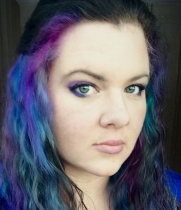Just in time for your long holiday weekend, my new novel Almost There is now available on all channels! It's a gripping summer read about sacrifice, forgiveness, and the surprising ways God meets our deepest needs.
Here's a snippet from the first page:
In Paris, art seeps into your feet and drips from your fingertips. Dark-eyed buskers in berets squeeze out sweet accordion songs, and the birds trill along. The air tastes like crème brûlée; the light is melted butter. Or so I’ve heard. In two weeks, I’ll find out for myself.
I can see it all now: In the golden mornings, Mum and I will set up matching easels on the banks of the Seine and paint side-by-side. She’ll be too excited to sleep till noon, too inspired to stare blankly at the wall. Her sadness will fall away like a too-heavy coat, and she’ll once again fill canvas after canvas with works of aching beauty.
Short description:
Paris, the City of Lights. To seventeen-year-old Dani Deane, it’s the Promised Land. There, her widowed mother’s depression will vanish and she will no longer fear losing her only parent, her arty New York life, or her devoted boyfriend.
But shortly before their Paris getaway, Dani’s tyrannical grandfather falls ill, pulling them to rural Pennsylvania to deal with his hoarder horror of a house. Among the piles, Dani finds disturbing truths that could make Mum completely unravel. Desperate to protect her from pain and escape to Paris, Dani hatches a plan with the flirtatious neighbor boy that only threatens the relationships she most wants to save.
Add it on Goodreads
Read the first four chapters for FREE on Wattpad
Purchase the ebook on Amazon (US) / Barnes and Noble / Smashwords / Kobo / Apple iTunes
Purchase the paperback from Createspace / Amazon (US) / Barnes and Noble
THIS GIVEAWAY HAS ENDED
Here's a snippet from the first page:
In Paris, art seeps into your feet and drips from your fingertips. Dark-eyed buskers in berets squeeze out sweet accordion songs, and the birds trill along. The air tastes like crème brûlée; the light is melted butter. Or so I’ve heard. In two weeks, I’ll find out for myself.
I can see it all now: In the golden mornings, Mum and I will set up matching easels on the banks of the Seine and paint side-by-side. She’ll be too excited to sleep till noon, too inspired to stare blankly at the wall. Her sadness will fall away like a too-heavy coat, and she’ll once again fill canvas after canvas with works of aching beauty.
Short description:
Paris, the City of Lights. To seventeen-year-old Dani Deane, it’s the Promised Land. There, her widowed mother’s depression will vanish and she will no longer fear losing her only parent, her arty New York life, or her devoted boyfriend.
But shortly before their Paris getaway, Dani’s tyrannical grandfather falls ill, pulling them to rural Pennsylvania to deal with his hoarder horror of a house. Among the piles, Dani finds disturbing truths that could make Mum completely unravel. Desperate to protect her from pain and escape to Paris, Dani hatches a plan with the flirtatious neighbor boy that only threatens the relationships she most wants to save.
Add it on Goodreads
Read the first four chapters for FREE on Wattpad
Purchase the ebook on Amazon (US) / Barnes and Noble / Smashwords / Kobo / Apple iTunes
Purchase the paperback from Createspace / Amazon (US) / Barnes and Noble
Giveaway
To celebrate the release, I'm running a fun giveaway of an Almost There themed gift basket. Enter by June 9 for a chance to win.
The gift contains:
Paris-themed lined journal
Be Still: a Psalms adult coloring book
Trouvaille vanilla candle
Parisian market-style wire basket with linen liner
Here's a peek inside the coloring book:
Not only does this verse nicely sum up some
of Dani's goals and struggles in Almost There, but also
a dressmaker dummy makes an appearance in the novel.
Intrigued?
Enter to win using the Rafflecopter form below.
THIS GIVEAWAY HAS ENDED




























